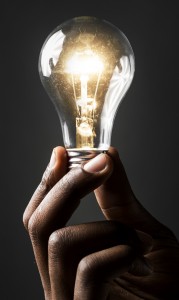 Technology seems to change more and more rapidly with each passing year, and the technology of photography is no exception. Some of this has had a positive effect on the field of photojournalism while some has not. Some recent technology threatens to change the face of photojournalism forever.
Technology seems to change more and more rapidly with each passing year, and the technology of photography is no exception. Some of this has had a positive effect on the field of photojournalism while some has not. Some recent technology threatens to change the face of photojournalism forever.
It’s hard to have a conversation about breaking news photography these days without inevitably mentioning the Chicago Sun-Times bold move of firing its entire photo staff in favor of iPhone. Technology has made near-real-time reporting a possibility for just about anyone, but at the sacrifice of absolute quality. There are certainly a lot of people up in arms about laying off the photo staff of the Chicago Sun-Times, but what if the problem isn’t technology or social media, but our own inability to adapt to these new mediums?
Enter exhibit A, the Samsung Galaxy NX. This camera may not be from the camera giants like Nikon, Canon, or even Sony, but it’s not something to scoff at. Honestly, I think it a harbinger of things to come. This is a mirrorless, interchangeable lens camera running Android with an APS-C-size sensor and WiFi/4G/LTE connectivity. Yes, it has a cellular data connection and can run any Android-based image editing software.
This could very well render iPhone photojournalism moot. Anyone with a serious knowledge of cameras realizes that having interchangeable lenses and an APS-C size sensor (physical sensor size similar to a Nikon D7100, D300, or Canon 7D, or 60D), basically means this has dSLR quality, but also has the cellular connectivity to send photos from anywhere with reception. This means you can shoot, edit, and upload within seconds, with quality that far exceeds an iPhone. Take that Chicago Sun-Times.
Of course, no self-respecting photographer has Samsung lenses lying around, or really wants their bread-and-butter camera to be a Samsung either. So, I don’t really think this particular innovation will have a direct effect on photojournalism, but it might still have an indirect effect. Nikon and Canon aren’t idiots. They know they have a huge following of press photographers. Without any inside knowledge, I’d take a stab and say that either Nikon, Canon, or some third party will create an on-camera attachment that will give 4G/LTE support to their dSLRs, similar to their current WiFi adapters.
Of course, this begs the question of how this will affect photojournalism. In a connected world, I have this vision of photojournalists and their editors working kind of like intelligence operatives. You’d have an operator and a controller. The controller can be fact-gathering from a broad perspective via the internet and feeding information like social structure, local hazards, and news breaks to the operator. The field operator, in turn, is the man-on-the-ground, taking photographs, conducting face-to-face interviews, and beaming the audio/visual materials back to the controller for processing and dissemination.
A similar setup already exists in large TV news networks, but with this new technology on the cusp of greatness, this job could now be done with two people, rather than large news teams. Honestly, it could be a pretty cool way to work, although who knows if we’ll go to that.
The technological advancement isn’t limited to wireless telecommunications though. Enter exhibit B: the Organic Sensor.
Fujifilm and Panasonic have managed to create a new organic sensor type that boasts massive improvements in dynamic range. For those unfamiliar with the term, dynamic range refers to the range of brightness levels (darkest to lightest) that a sensor is capable of discerning. The absolute best camera out there right now in terms of dynamic range is the Nikon D800, and has a 14.4-stop dynamic range (remember, each stop is double or half the amount of light as the previous amount). This new sensor technology could theoretically boost that range to 29.2 stops.
As much as I’m excited about this prospect for my own photography, I also recognize that this could open the flood gates even wider for wannabe photographers and photojournalists. The new sensors not only have a wider dynamic range, but also are more sensitive to light, making them better in low light scenarios. The “fix it in post” argument will become even more prevalent when exposure and lighting can be missed by a laughable amount, but still retain enough detail to bring it back. Add this to a camera like the Lytro where you can refocus the image after the fact, and you have a recipe for disaster.
I never thought I’d be that cantankerous old fart that says “way back in my day, we had do things the hard way” but it looks like photography is moving in that direction. Digital was bad enough, acting as a crutch to bad photographers around the world. Taking the exposure and focusing guessing game out of the equation will make for some really lazy photographers.
Then again, for those photographers who push themselves, a camera with that much flexibility will make it that much easier to capture that defining moment in a story. The camera will truly melt away once and for all, allowing the photojournalist an unencumbered medium to tell the story they wish to tell. Of course, then again, limitations sometimes spawn the most creative solutions, and a blank page is a recipe for writer’s block. So, who knows how this will really affect us.
I guess you could say, this is my exceedingly long-winded version of “we live in an exciting time.” It should be interesting to see how photojournalism evolves over the next few years.
